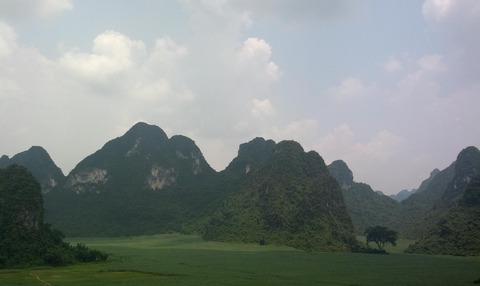当前位置:
X-MOL 学术
›
Funct. Ecol.
›
论文详情
Our official English website, www.x-mol.net, welcomes your
feedback! (Note: you will need to create a separate account there.)
Topography strongly affects drought stress and xylem embolism resistance in woody plants from a karst forest in Southwest China
Functional Ecology ( IF 4.6 ) Pub Date : 2020-12-05 , DOI: 10.1111/1365-2435.13731 Qi‐Wei Zhang 1 , Shi‐Dan Zhu 1 , Steven Jansen 2 , Kun‐Fang Cao 1
更新日期:2020-12-05
Functional Ecology ( IF 4.6 ) Pub Date : 2020-12-05 , DOI: 10.1111/1365-2435.13731 Qi‐Wei Zhang 1 , Shi‐Dan Zhu 1 , Steven Jansen 2 , Kun‐Fang Cao 1
Affiliation

|
- Xylem resistance to drought‐induced embolism is an important trait determining plant distribution. In the karst hills of Southwest China, with a relatively small variation in altitude, soil depth and water availability strongly decrease from the foot towards the top, and woody plant species display distinct spatial distribution.
- For testing the hypothesis that embolism resistance of leaf and stem xylem reflects the spatial distribution across species along a topographical gradient of the karst hills, we measured the xylem water potential in the dry season, vulnerability to drought‐induced embolism in stems and leaves, and relevant anatomical traits in 17 evergreen species with a different topographical distribution.
- We found that from the foot towards the hill top, plant water potential sharply decreased, and both stem and leaf xylem showed increasing resistance to hydraulic dysfunction and drought‐resistant anatomical characteristics, but non‐significant variation in specific hydraulic conductivity. Also, hydraulic safety margins increased with relative altitude and thus increasing hydraulic safety. Hydraulic safety underlies the local distribution of the species, but does not come at the cost of hydraulic efficiency.
- Our results demonstrate that plant hydraulic safety largely shape the niche differentiation and hence community assembly in highly heterogeneous and water‐limited landscapes.































 京公网安备 11010802027423号
京公网安备 11010802027423号